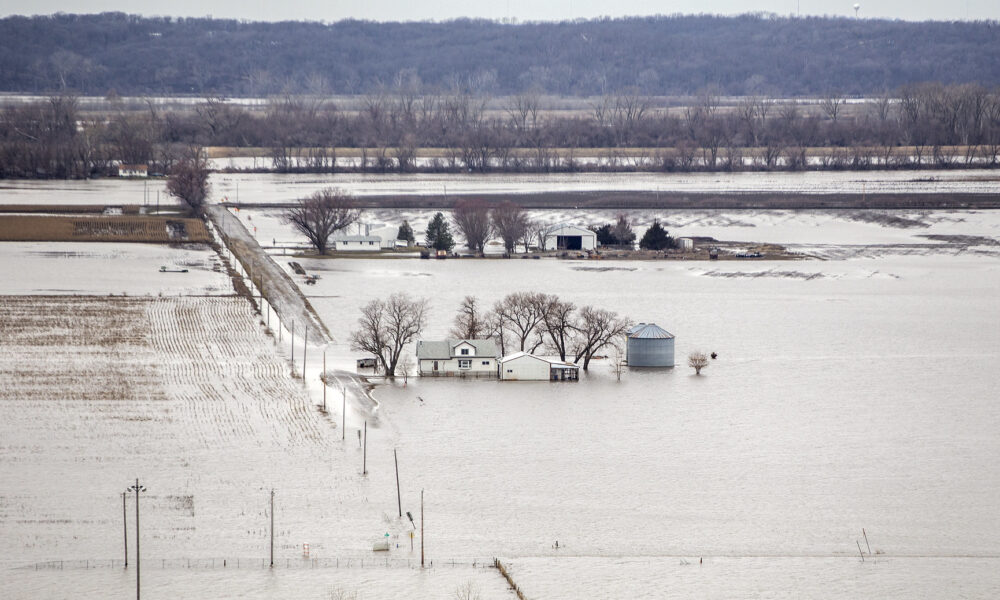Continued flooding in California caused by severe storms called atmospheric rivers continues to shock the country. Just last week, broken river levees devastated the majority-Latino community of Pajaro, California. Human-caused climate change is expected to increase the number and intensity of extreme weather events like hurricanes, floods, and droughts that are already ravaging communities across the United States.
The human cost of the Pajaro disaster, including the loss of homes, jobs, and local infrastructure, is truly tragic and may be growing. In Pajaro, a community in which many people rely on farm work, strawberry fields are now flooded, and many may be decimated for the season. For the average US consumer, this may mean fewer or more expensive strawberries in the grocery store, but for the people of Pajaro, this means a loss of income and livelihood, which can have dramatic consequences for their housing and food security.
As Danger Season is about to begin—the time when multiple climate-related risks are at their highest—I want to highlight food insecurity as an underappreciated risk of climate change for farmworkers and their families.
Farmworkers already experience food insecurity disproportionately
Among US populations, farmworkers are more likely to struggle to put food on the table. While about 10% of the general population experiences food insecurity, anywhere from 47% to 82% of farmworker households struggle with it.
Food insecurity is connected to other conditions in a complex web that causes those who are poor to stay poor. When someone is food insecure, they are less likely to eat nutritious food and more likely to spend more money on hospital bills. Children from food-insecure households lack key nutrients, which may cause mental health conditions that lead to poorer educational outcomes. And illness and educational outcomes affect a household’s future earning potential, leading them right back to food insecurity. Since so many farmworker families experience food insecurity, it is difficult to see how they can escape the vicious cycle of poverty.
How climate change is contributing to food insecurity
Rapidly advancing human-caused climate change has many different impacts on agriculture including increasing temperatures, changing precipitation patterns, and increasing frequency and intensity of extreme weather events such as hurricanes. Farmworkers work outside and are therefore particularly vulnerable to these hazards, which can interact with working conditions in the field to directly affect their health. For instance, chronic and acute kidney conditions are linked to high temperature exposure coupled with dehydration.
But climate change also causes hazards off the field by limiting farmworkers’ income. As temperatures rise, the number of days when it is simply too hot to work will increase. Farmworkers are often paid based on the amount of produce picked, so not being able to pick produce or not being able to work full days prevents them from making the most income they can. An analysis performed by the Union of Concerned Scientists showed that increasing heat may cause outdoor workers, many of whom are farmworkers, to collectively lose as much as $55.4 billion every year on average by mid-century.
Extreme weather events, such as devastating floods and hurricanes, not only prevent farmworkers from working during the event itself, but may also irreparably damage fields and thus affect income for the whole season. This is exactly what is happening in Pajaro—and has happened elsewhere, as in Florida during Hurricane Irma last year.
Farmworkers are already some of the lowest-paid workers in the United States, with average family incomes between $25,000 and $29,999. Migrant workers are particularly vulnerable, as almost half live below the federal poverty threshold. Losing a week or more of income due to climate change means that they may come up short on payments for rent, utility bills, or food—or face difficult decisions around what they can afford. In addition, farmworkers often live in poorly constructed homes that may be damaged during extreme weather events, which further adds to the disruption.
Emergency food systems are stretched thin
There are many ways to bridge the food insecurity gap: through public-facing programs such as the Supplemental Nutrition Assistance Program (SNAP) or through food banks and food pantries. Whether these are enough to help farmworkers is difficult to tell due to a lack of data and the rapidly changing situation during extreme weather events.
Many farmworkers may not have direct access to public benefits or may be afraid to use them—only 13% participate in SNAP despite their high food insecurity rates. And for those who are eligible for SNAP, the benefits may not come fast enough to bridge an immediate loss of income brought on by extreme weather events. SNAP is also often insufficient, especially in the face of sharply rising food prices and the revocation of pandemic-era benefits in March 2023. Even with SNAP, many families are already struggling.
Food banks and pantries are essential in supplementing limited income or during emergencies, but even food pantries are struggling as demand has sharply increased due to the COVID-19 pandemic, inflation, and now the hunger cliff. When extreme weather events are thrown into the mix, food pantries will need extra help to be able to provide their essential services.
What can be done?
Farmworkers face disproportionate occupational hazards from extreme weather and climate change that have far-reaching consequences off the field. Already sky-high food insecurity rates in farmworker communities will likely grow even higher as climate change worsens, threatening food production and earnings. Big corporations and industrial agriculture companies should pay farmworkers fair wages and provide labor protections. And we need solutions and wage protections for the times farmworkers are unable to work due to emergencies such as extreme weather events.
Farmworkers are organizing and asking for better conditions and wages, including the Coalition of Immokalee Workers’ fight against supermarket chain Publix, as depicted in the documentary Food Chains. Many organizations, including The Farmworker Association of Florida and Farmworker Justice, support frontline communities with advocacy and activism on all the issues farmworkers face.
We at the Union of Concerned Scientists join them—and hope you can join us too! Climate change affects us all, but it hits those who work in harsh conditions day after day much harder. We need to continue pushing the federal government and food corporations whose profits are soaring to right past wrongs and protect all farmworkers.

